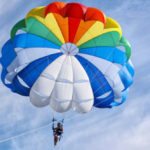 Miscellaneous
Miscellaneous  Miscellaneous
Miscellaneous  History
History 10 Huge Historical Events That Happened on Christmas Eve
 Music
Music 10 Surprising Origin Stories of Your Favorite Holiday Songs
 History
History 10 Less Than Jolly Events That Occurred on December 25
 Weird Stuff
Weird Stuff 10 Funny Ways That Researchers Overthink Christmas
 Politics
Politics 10 Political Scandals That Sent Crowds Into the Streets
 Weird Stuff
Weird Stuff Ten Bizarre Facts About The Doge Meme
 Our World
Our World 10 Ways Your Christmas Tree Is More Lit Than You Think
 Movies and TV
Movies and TV The 10 Coolest Stars to Set Sail on The Love Boat
 History
History 10 Things You Didn’t Know About the American National Anthem
 Miscellaneous
Miscellaneous Top 10 Things Crypto Was Supposed to Change & What Actually Did
 History
History 10 Huge Historical Events That Happened on Christmas Eve
 Music
Music 10 Surprising Origin Stories of Your Favorite Holiday Songs
Who's Behind Listverse?

Jamie Frater
Head Editor
Jamie founded Listverse due to an insatiable desire to share fascinating, obscure, and bizarre facts. He has been a guest speaker on numerous national radio and television stations and is a five time published author.
More About Us History
History 10 Less Than Jolly Events That Occurred on December 25
 Weird Stuff
Weird Stuff 10 Funny Ways That Researchers Overthink Christmas
 Politics
Politics 10 Political Scandals That Sent Crowds Into the Streets
 Weird Stuff
Weird Stuff Ten Bizarre Facts About The Doge Meme
 Our World
Our World 10 Ways Your Christmas Tree Is More Lit Than You Think
 Movies and TV
Movies and TV The 10 Coolest Stars to Set Sail on The Love Boat
 History
History 10 Things You Didn’t Know About the American National Anthem
10 Joyous Occasions That Turned Into Horrible Tragedies
Sometimes, utterly horrible things can produce stories of love and bravery that are absolutely inspiring. Sadly, the opposite is also possible. Fate takes days meant to be all about happiness and turns them into devastating tragedy.
10Balloonfest ’86
In 1986, the city of Cleveland, Ohio, attempted a rather unusual world record. On September 27, just before 2:00 PM, they launched 1.5 million balloons into the sky in one go. Guinness was absent, so the event never got its place in the record books as the largest balloon deployment. Organizers blew half a million dollars anyway, which is probably the worst money they’ve ever spent.
The launch itself looked spectacular. When the net holding the balloons down was released, the sky turned into a mass of polka dots. Then it began to rain. The wet balloons plummeted, and that’s when things went really bad, really quickly.
The nearby Burke Lakefront Airport was shut down for 30 minutes. In a pasture, the falling balloons spooked some prize-winning horses, and the owner later sued organizers for $100,000. Police reported numerous car accidents as drivers found themselves in the world’s most colorful blizzard.
The real tragedy took place on Lake Erie. Two fishermen had gone missing, and a Coast Guard helicopter was out searching for them. When thousands of balloons descended onto the lake, the search had to be called off. By the time it could resume, it had become a search for the men’s bodies. Every floating balloon looked like it could be a head.
The wife of one of the men sued organizers for $3.2 million, and the case was settled out of court.
9Dreamspace
In 2006, British artist Maurice Agis brought his latest project to Chester-le-Street in northeast England. Known as Dreamspace, the giant, inflatable structure let people enter and walk around. The colors and music sought to create a pleasant atmosphere.
Agis had been producing similar pieces throughout Europe for decades and had received 250,000 visitors. This was Dreamspace V, and the Arts Council of England had awarded the project £60,000 ($100,000) due to its predecessors’ popularity. The Arts Council were very keen to bring art to Chester-le-Street, which they described as having “no visual arts infrastructure at all—it has no buildings, no galleries. It is a deprived area.”
On July 22, a particularly hot day, the sculpture broke free from its moorings. It rose 9 meters (30 ft) into the air and flipped right over, killing two women and injuring 13 others. Agis was arrested and tried for manslaughter, although a jury failed to reach a verdict.
This wasn’t the first time Agis’s work had gone awry. In July 1986, he was displaying Colourspace, a similar sculpture, in the German town of Travemunde. As in the disaster 23 years later, the piece came loose due to hot weather and rose into the air. Five people were badly injured. One person inside recalls a sudden feeling of flying before plummeting toward the ground. He landed on the floor and fell unconscious, smashing both of his arms and needing months to recover.
8Rose Parade Disaster

Pasadena, California has celebrated the Rose Parade as a New Year’s Day tradition since 1890. Hundreds of thousands of people turn out to see the parade, and millions more watch it on television. In 1926, the 36th Rose Parade became the first to be broadcast on radio. It also became the deadliest day in the parade’s history.
Things started badly. Before the parade began, a spectator fell from a two-story building and landed on her head. She died instantly. Shortly afterward, a police officer suffered spinal injuries when the growing crowd spooked his horse, who threw him off and trampled him.
Then the major tragedy hit. A wooden grandstand seating hundreds of people collapsed. A nearby marching band rushed to help, pulling planks off the spectators, many of whom were children. Survivor Shav Glick was five at the time, and recalled, “Both my parents suffered broken feet and ankles, but I was tossed up, sort of like a cork from a bottle, and was one of the few uninjured.”
Two hundred people were injured, and 11 were killed. Paul F. Mahoney, who’d constructed the stand, was charged with manslaughter and served a year in prison. He’d been refused liability insurance on account of poor construction but had left his stand in place. He just put up a sign stating: “All parties entering stand or parking cars on these premises New Year’s Day 1926 do so at their own risk.”
7Rhoads Opera House Fire

The people of Boyertown, Pennsylvania were excited about the play to be performed on January 12, 1908. Fifty youngsters were due to put on a show at the Rhoads Opera House, watched by 400 of the town’s population of 2,000.
Harry Fisher manned the projector for the performance. He accidentally turned the wrong valve, and a loud hissing noise erupted. When cast members lifted the stage curtain to find what had happened, they knocked over a kerosene lamp. Men in the front row were able to extinguish the small fire that began. But when others moved the kerosene tank fueling the footlights as a precaution, the frame buckled. Fuel poured out and exploded, lighting the curtains.
The room became an inferno. The doors could only swing inward, so the mass of people scrambling to escape made it impossible to open them. Hundreds were trapped inside. The theater had fire exits, but they were unmarked and only accessible through windows several feet above the floor. It was almost impossible to climb in the heat and smoke, hampered by bodies and broken glass. It was even harder for many of the women in long dresses.
When one door was smashed open, dozens tumbled down the staircase beyond it, many falling to their death. Piles of bodies were later found five people deep.
The roof collapsed at midnight, four hours before the fire was brought under control. In total, 171 people ded, including entire families.
6Chicago World’s Fair

The 1893 World’s Fair in Chicago, also known as the Columbian Exposition, was a touchstone in the history of both the city and America. The city narrowly beat New York to host it, and it was during the battle between the cities that a New York newspaper editor popularized the nickname “the Windy City.” It drew 27 million visitors over six months. On a single day, 716,881 people attended to commemorate the anniversary of 1871’s Great Chicago Fire, setting a world record.
Yet the fair also brought something else to the city: an epidemic of smallpox. The European immigrants who built the fair lived in deplorable conditions—30 workers died during construction, and 5,919 medical cases reached the exposition’s medical department. Chicago hadn’t carried out a smallpox vaccination program for a decade, and the workers’ camps became a breeding ground for the disease.
Cases soared in August and turned into an epidemic by November. The Chicago Tribune reported: “Following the world’s fair, the Chicago pesthouse was a hideous structure, in itself, through which 3,500 cases passed. Far into the summer, the epidemic ran.” The outbreak killed 1,213 people.
Some note that a deadly smallpox plague carried to the US by European immigrants is a depressingly fitting tribute to the anniversary of Columbus’s discovery of the New World.
5Bradford City Stadium Fire
In May 1985, Bradford City football club won their division and received the league trophy. On May 11, fans packed the stands for the team’s final game of the season. They were playing in Valley Parade, a stadium which hadn’t been updated since 1908. At 3:40 PM, a cigarette stub started a fire in the stands.
When commentator John Helm noticed the fire, he drily said, “These are extraordinary scenes at Valley Parade. It’s supposed to be a day of celebration. One hopes the stand doesn’t burn down.”
Within minutes, the entire stand was ablaze. Helm could feel the scorching heat all the way from the opposite side of the pitch. As struggling fans were being dragged from the stand, he summed it up: “They came to celebrate the club’s promotion to the second division for the first time in 50 years, and now they’re running for their lives.”
The above video shows people stumbling onto the pitch aflame, frantically smothered by police and members of the public trying to help. Fifty-six died, including many children and the elderly crushed during the panicked rush from the stand. Another 265 were injured. It was the worst disaster in English football history until the Hillsborough tragedy four years later.
4Chicago Porch Collapse

The deadliest accident of its kind occurred on June 29, 2003. A large group of people, mostly old high school friends in their early twenties, were attending a party at an apartment building in Chicago’s Lincoln Park. Fifty stood on the third-floor balcony. The wooden structure creaked and collapsed, smashing through the occupied balconies on the two floors below. Around 100 people flew with the rubble into the basement.
One survivor, Natalie Brougham, was on the top balcony. She recalls standing, talking, and then waking up in a pile of people without knowing what happened. Her worst injury was a broken nose, but others had it a lot worse. “There was somebody who bit off her tongue,” she said. “It was pretty crazy.”
Other survivors recall screams of terror. Paul Mugler, also on the top balcony, said, “You couldn’t see faces. You could just see hands trying to reach out and push whatever off them.” Student John Koranda was trapped at the bottom of the pile for over an hour. He escaped with minor injuries, but while being driven home, he heard his brother had been killed in the disaster.
Thirteen died and another 57 were injured, many seriously. Investigations showed that the porch had been poorly constructed, using screws that were too small and without adequate supports.
3River Dee Ferryboat Disaster

April 5, 1876, was part of the spring holiday in Scotland, a feature of the Church of Scotland’s annual Holy Communion in the highlands. The weather was fine in Aberdeen, and a fair was taking place in Torry, a village on the opposite side of the River Dee. Many people decided to make a day of it.
Crossing the river at that time involved a ferry pulled by rope. The ferry was designed to seat 32 passengers, but 70 people swamped the vessel. When they were in the middle of the river, a strong flood tide caught them, and the vessel took on water.
Over 60 people ended up in the icy waters, and 32 never made it out. Relatives crowded the river bank until the early hours of the morning, waiting hopelessly for the bodies of their loved ones to wash ashore.
2Celebratory Gunfire Ruins Everything

Shooting guns into the air as an act of celebration is a really, really bad idea. A bullet shot upward falls back to the ground at more than twice the speed needed to penetrate skin. That’s particularly a problem in the Middle East, where celebratory gunfire is a cultural norm.
In January 2013, Iraq’s football team scored a late goal to take them into the final of the Gulf Cup. In the aftermath, dozens of people were hit and several killed as a result of falling bullets shot into the air by celebrating fans.
Lebanese politics is punctuated with the sounds of Kalashnikovs being fired in support of candidates. A barrage of gunfire is to be expected at the end of any candidate’s speech. In 2008, a teenage boy was hit by a bullet fired during a speech given by the country’s Prime Minister. The bullet passed through the top of his skull and stopped in his neck. He died not long afterward.
Weddings, too, are a popular occasion for shooting guns. It’s even possible to rent guns for weddings in Jordan. The government of the country’s Jerash region created a set of recommendations to prevent the practice, including a suggestion to include “Please, do not fire bullets” on wedding invitations. The above poster, from the International Action Network on Small Arms, reads: “Bullets are not greeting cards. Celebrate without firearms.”
On October 30, 2012, a wedding in Saudi Arabia ended in the deaths of 23 people. Celebratory gunfire hit an overhead electric cable, which swung into a metal door and electrocuted the victims.
1Castelldefels Train Accident
On June 23, 2010, a group of partygoers had just gotten off a train on their way to a beach party and bonfire to celebrate the summer solstice. The festival in Castelldefels is one of Catalonia’s biggest yearly fiestas. Their beach was on one of the tracks; the train let them off on the other. The official path between them is an underpass, but according to one local, “The underpass is quite small and it has been the usual practice for crowded trains coming from Barcelona to have at least a third of the passengers crossing the line.” The result of large crowds frequently crossing a train line is as horrific as it is inevitable.
A train traveling 139 kilometers (86 mi) per hour hit the group of over 30 people. Twelve died, their bodies ripped to shreds, and at least 14 others were injured. Many of the injuries resulted from body parts flying onto the nearby platform and hitting waiting passengers. At one point, the estimated death toll was changed to 13, as authorities believed they had pieces from an extra person.




![Top 10 Haunting Images Of Historic Tragedies [DISTURBING] Top 10 Haunting Images Of Historic Tragedies [DISTURBING]](https://listverse.com/wp-content/uploads/2020/05/33758v-150x150.jpg)



